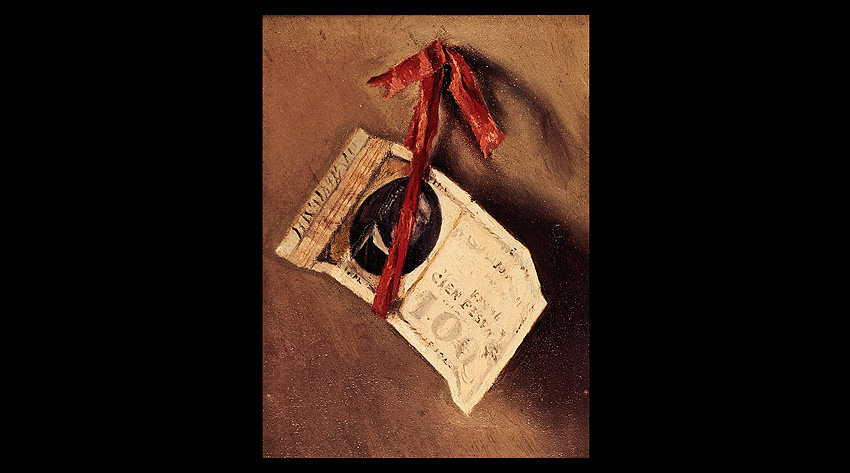One Hundred Peseta Note, Mariano Fortuny y Madrazo (Attributed)
04/06/2019
The Banco de España has a fascinating and extensive collection of both classical and contemporary works of art closely connected to the world of finance. In the first of a series of blogposts under the heading “If paintings could talk”, we present “One Hundred Peseta Note”.
This small panel has traditionally been attributed to Mariano Fortuny y Madrazo. If the authorship is confirmed, it would correspond to his mature period. This is indicated by the free style of the painting, which has something of a quick sketch, and its size, similar to that of numerous other small panels (tableautin) among his later work.
The date of the painting is necessarily after 1898, as the banknote depicted belongs to the series issued on 24 June 1898, which remained in circulation until at least 1 May 1900 when the following series was issued with a different design.
The note depicted in the painting bears the bust of Gaspar Melchor de Jovellanos (1744-1811), one of the leading intellectuals of the Spanish Enlightenment, wearing the robes of a judge. On the right-hand side there is a small Mercury with the traditional Caduceus, which the artist has omitted from his painting, along with other printed elements, so as to make only the amount legible.
Just as the object itself and the face of the portrait seem to be fading on account of the loose technique used, the banknote would appear to be about to fall through the air. Tied to a red ribbon like a votive offering, it seems to be frozen in a state of imbalance that affords the work an air of vanitas, in which the traditional exhortation when faced with the fleeting nature of life and riches is condensed into the symbol of trade: money.
-
Mariano Fortuny y Madrazo (attributed)
One Hundred Peseta Note, circa 1898
After 1898
Oil on canvas, 33 x 24 cm
The national central banks are responsible for banknote issuance, according to the production volume determined by the European Central Bank (ECB) for each year. Since 1 January 2002, when the euro first came into circulation, replacing the legacy notes and coins, seven banknote denominations have been legal tender in the euro areaAbre en ventana nueva: €5, €10, €20, €50, €100, €200 and €500. The new €100 euro note was launched recently, Would the title of the updated version of this painting be One Hundred Euro Note?



